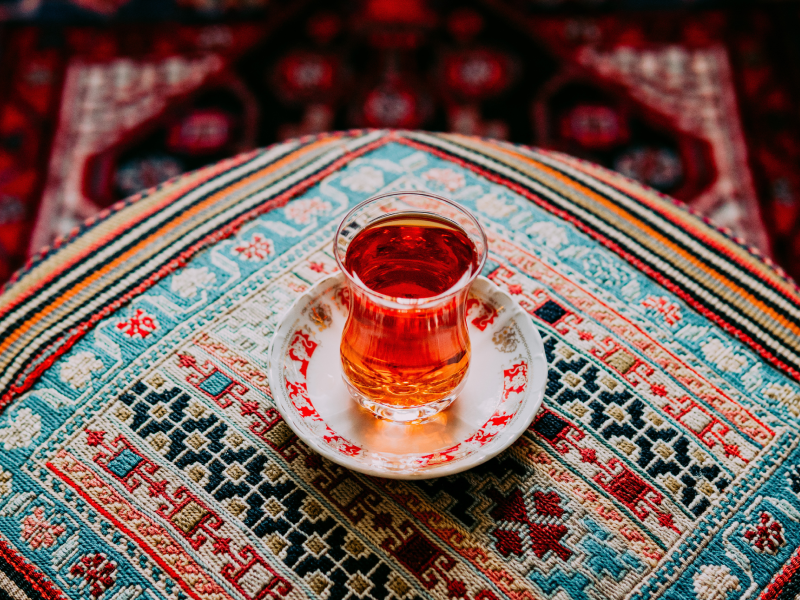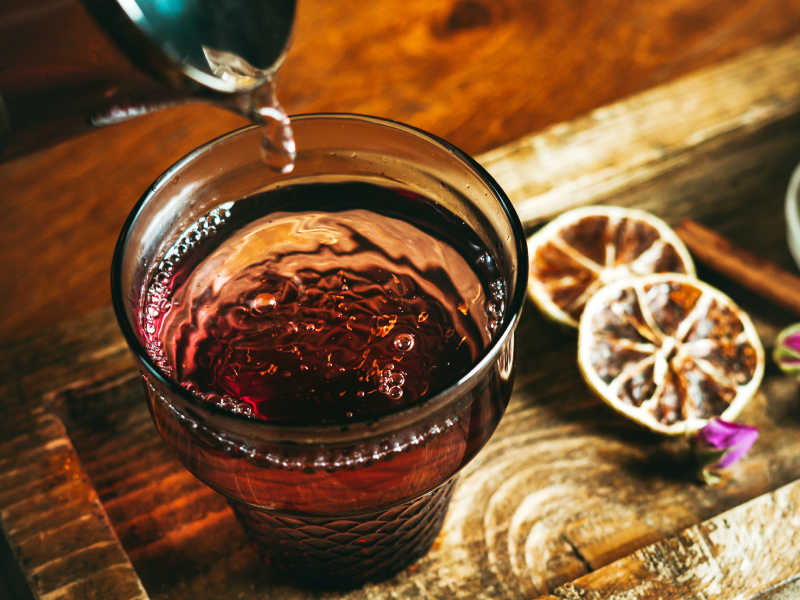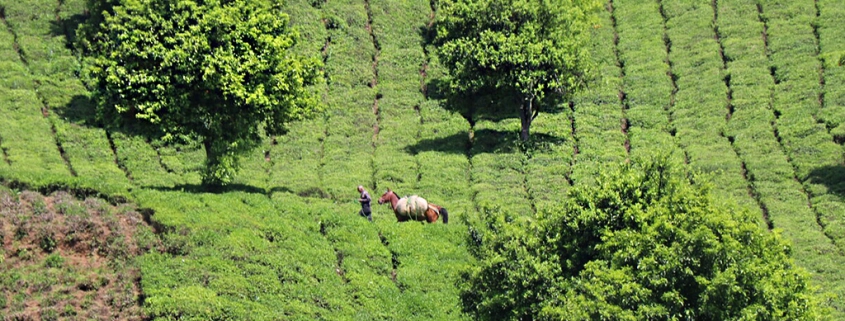Persian Tea: Recipe, Benefits & Types of Iranian Tea
One of the beautiful aspects of the country of Iran and its people is its culture. Persian tea has a particular place in Iranians’ hearts and cups. It has been an important part of Iranian culture and traditions for generations, and its popularity continues to grow.
Iranians see tea as more than simply a beverage; it is a symbol of hospitality, socializing, and relaxation. Persian tea is well-known outside of Iran. Iranian diaspora populations across the world have also embraced this beverage, carrying on their tea-drinking customs and passing them along to future generations.
What Is a Persian Tea?
For those who have no knowledge of Iranian culture, it may be difficult to understand what Persian tea is. Persian tea, also known as Iranian tea or Chai-e Irani, refers to the traditional technique of brewing and serving tea in Iran. It is primarily prepared from black tea leaves and is recognized for its robust flavor and rich scent.
Persian tea is consumed regularly by Iranians and has cultural importance in Iranian society. Persian tea is served with hospitality and social engagement. Iranians typically serve tea to guests as a welcome and friendly gesture. Tea is also consumed at social gatherings, family visits, and cultural events.
Tea drinking is so popular that there are places called “Ghahve Khane” or “Chai Khane,” which means Coffee House or Tea House, that serve tea with other eatables.
Persian Tea History
Tea has been consumed in Persian culture since the 16th century. During the Safavid Empire period, it rose in popularity and became a symbol of luxury and hospitality. Tea planting began in Gilan, earning the region the title of “tea capital” of Iran.

Persian tea is offered during social occasions, and the ways of preparing and serving it have cultural importance. Tea is still an important component of Iranian culture and is consumed throughout the day.
Why Is Persian Tea So Good?
Persian tea is popular for its unique flavor, enticing scent, cultural value, and ability to build social relationships. Its distinct and powerful flavor, which is frequently brewed strong, as well as other ingredients like cardamom or saffron, contribute to its popularity. The scent of the tea enriches the whole experience.
Persian tea is deeply rooted in Iranian culture, expressing traditions, ceremonies, and a welcoming atmosphere. Sharing tea fosters social relationships and meaningful conversations. Persian tea’s cultural importance and pride contribute to its attractiveness.
Providing a lovely sensory experience, a sign of Iranian culture, and an opportunity to interact with people while enjoying a treasured ritual, Persian Tea is one of the best Iranian beverages.
What Is the Most Popular Tea in Persia?
The most popular tea in Iran is typically Persian black tea. It is known as “Chai” in Persian. Black tea is extensively drunk across the country and serves as the base for Persian tea.
It is frequently consumed simply or seasoned with additives like cardamom, saffron, or rose petals to create a distinct flavor and scent.
While black tea is the most popular, other tea kinds such as green tea, herbal tea, and fruit infusions are also popular among Iranians, albeit to a lesser level than Persian black tea.
Persian Black Tea
Persian Black tea is traditionally made in a Samovar, a big Russian metal pot that boils water. It has a top ring where the teapot is put for making tea. Traditional Samovars use coal to heat their homes, but newer ones use electricity or gas. However, due to their high cost and limited space, Samovars are no longer often used.

A kettle and a teapot can also be used to make Persian tea. Teapots made of China or porcelain are preferable, however, any teapot can do. When drinking Persian tea, it is usual to hold the glass by the rim or the little handle to avoid scorching your fingers. Sipping the tea gently and appreciating its taste is part of the tea-drinking experience.
How to Brew Persian Tea?
Persian Tea ingredients consist of only water and fresh loose black tea leaves (preferably Ceylon or Darjeeling and Sugar cubes or rock candy as an optional choice to taste. To make Persian tea, bring new water to a boil and warm the teapot.
Fill the teapot halfway with loose black tea leaves (approximately 1 teaspoon each cup). Allow the leaves to soak for 5-7 minutes in boiling water. Pour the brewed tea into a different teapot or glass. Fill small cups roughly one-third full with the drink.
Add boiling water to dilute the tea to the desired strength. Add sugar cubes or rock candy as desired. Serve hot with typical Iranian side dishes. To taste, adjust the brewing time and quantity. Experimentation will assist you in determining the appropriate balance for your ideal cup of Persian tea.
Persian Tea Benefits
Persian tea may have various health advantages. It is high in antioxidants such as flavonoids, which help protect the body from oxidative stress and lower the risk of chronic illnesses. It is thought that drinking Persian tea after meals helps digestion and soothes the stomach. Persian tea also aids in general hydration, making it a pleasant beverage option.
Caffeine in Persian tea can deliver a natural energy boost while also improving alertness, attention, and cognitive ability. Regular tea drinking, particularly Persian tea, has been linked to enhanced heart health by decreasing blood pressure and lowering the risk of heart disease.
Persian tea polyphenols may have antibacterial characteristics that benefit dental health by reducing bacterial development and avoiding tooth decay. Furthermore, when compared to sugary beverages, Persian tea is low in calories and might be a good choice for weight control.
Where to Buy Persian Tea?
When it comes to finding a tea center in Iran, one popular destination is Lahijan, situated in Gilan. Lahijan is famous for its teas and renowned for its tea production. It is often referred to as the “tea capital” of Iran across the nation.

In Lahijan, you can visit the local tea markets and tea houses to explore and purchase a variety of Persian teas, including the famous Lahijan tea. These tea centers offer a unique opportunity to experience the local tea culture and learn about the tea production process.
Types of Persian Tea
Persian tea comes in a range of flavors and varieties to suit diverse tastes. The most prevalent and powerful tea is black tea (Chai Siah), whereas green tea (Chai Sabz) has a lighter and more delicate flavor. Herbal infusions (Chai Sabzkhosh), including herbs such as chamomile, mint, and rose petals, are prized for their calming properties.
Blends and flavored teas, such as saffron-infused or cardamom tea, give conventional brews a new touch. Apple tea, for example, has a natural sweetness. Though less frequent, white tea has a delicate taste. Persian tea fans may explore and select their favored blends and types thanks to its broad range of alternatives.
Final Words
Persian tea is deeply ingrained in the culture of the Iranian people. Persian tea is extremely popular among Iranians, both in Iran and in the diaspora. Its particular flavor, the significance of its serving rituals, and its significance in Iranian culture and hospitality make it a beloved part of daily life.
Persian tea is a lasting emblem of Iranian culture and tradition, whether consumed during family gatherings, shared with friends, or enjoyed alone.
Are you planning to travel to Iran and looking for an Iran resort? Consider Matinabad Eco-resort.





Leave a Reply
Want to join the discussion?Feel free to contribute!